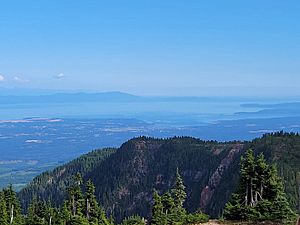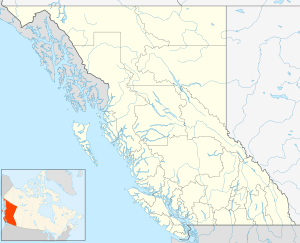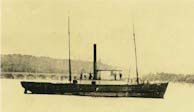Comox Valley facts for kids
Quick facts for kids Comox Valley |
|
|---|---|

A view of Comox Valley and Harbour from Mount Washington, with Strait of Georgia and Texada Island in the background
|
|
| Location | Vancouver Island, British Columbia, Canada |
| Coordinates | 49°40′47″N 124°58′10″W / 49.6798337°N 124.9694395°W |
The Comox Valley is a beautiful region on the east coast of Vancouver Island, British Columbia, Canada. It includes the city of Courtenay, the town of Comox, and the village of Cumberland. You'll also find smaller communities like Royston, Union Bay, Fanny Bay, Black Creek, and Merville. Even Denman Island and Hornby Island are considered part of the Comox Valley. About 76,000 people live here as of 2022. This makes it one of Canada's larger metropolitan areas.
Contents
Geography of Comox Valley

The Comox Valley is a flat area with rich, deep soil. To the west, you can see mountains, and the impressive Comox Glacier watches over the valley. On the east side, sandy beaches stretch along the coast of the Strait of Georgia.
History of the Comox Valley
First Peoples and Early Life
Long ago, three groups of Indigenous people lived in the valley. These were the Comox, the Pentlatch, and the Lekwiltok. They used the rich soil for farming. They also kept the land clear by carefully burning parts of it.
First European Visitors
The first European visitors arrived in 1792. This happened when the ship HMS Discovery anchored in Comox Harbour. This was the first time the original First Nations people met Europeans in Comox.
Early European Settlers
In the spring of 1861, the first European settlers came to the valley. They wanted to start farms. The governor at the time, Governor James Douglas, encouraged people to settle here. He wanted them to farm in areas like the Comox Valley.
Many of the first settlers were coal miners from Nanaimo. Some were also employees of the Hudson's Bay Company. A serious illness affected many of the native people in 1862.
Getting Around the Valley
Until the mid-1890s, the only way to reach the Comox Valley was by sea. Roads were difficult to build and maintain. In 1874, a long government wharf was built. The first bridge over the Courtenay River was also built that year.
Logging and Other Industries
The Comox Valley became a major center for logging. The Comox Logging & Railway Company was one of the largest private railway companies in the British Empire. Logging was the biggest job source for many years.
Later, logging and mining slowed down in the 1960s. Fishing also declined in the 1990s. Even with these changes, the region grew quickly. Today, most logging workers travel to other areas.
Economy of Comox Valley
Since 2008, the area has been part of the Comox Valley Regional District. Today, the main growing industries are tourism and construction. A ski resort at nearby Mount Washington brings many tourists.
The Canadian Forces base, CFB Comox, also helps the local economy. More than half of all jobs are in the service sector. This means people work in areas like retail, healthcare, and education.
Transportation in Comox Valley
The Comox Valley has several ways to get around. There are two main highways, a few small airports, and a ferry terminal. A freight railway line also runs through the valley. Passenger train service stopped in 2011.
Highways
Highway 19A was the original main road. It follows the coast closely and connects most communities. The newer Highway 19 is further inland. It is a faster route that bypasses the busy areas.
Airports
The airports in the valley include CFB Comox, Courtenay Airpark, and Courtenay Airport. You can fly directly to cities like Calgary, Edmonton, and Vancouver. There are also seasonal flights to places like Puerto Vallarta and Toronto.
Ferry Service
BC Ferries operates a terminal at Little River. From here, you can take a ferry to Powell River and Texada Island.
Culture in Comox Valley
In 2007, the Comox Valley was named one of Canada's "Cultural Capitals." This means it's a place with lots of music and arts events. Many volunteer groups also work to support culture in the community.
The valley is known as "The Valley of Festivals." Some of the fun events include:
- Art & Bloom Festival
- North Island Hot Jazz Festival
- Comox Valley Shellfish Festival
- Vancouver Island MusicFest
- Hornby Island Festival
- Filberg Festival
- Comox Nautical Days
- Comox Valley Exhibition Fall Fair
- Cumberland Wild



